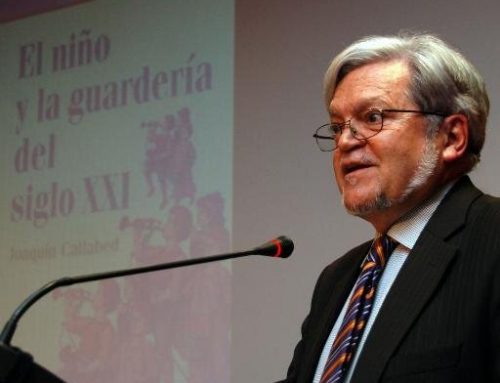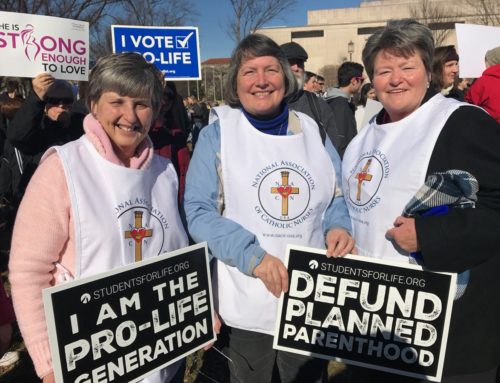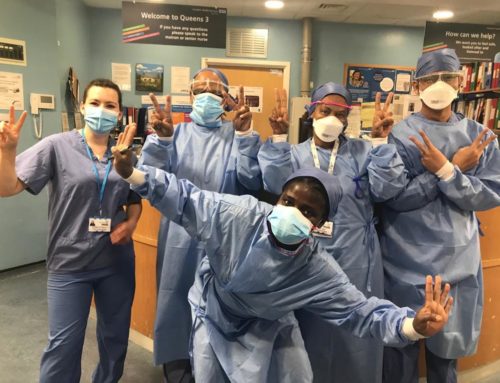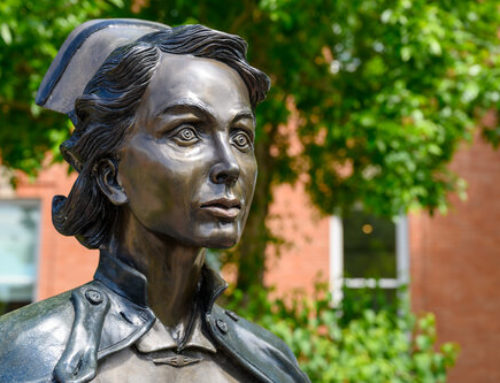1899 – 1948Nurse, lay martyr and World War II heroine
Roman CatholicMalaysia

Sybil Kathigasu was born Sybil Medan Daly on September 3, 1899 in Medan, Sumatra, Dutch East Indies. She was the fifth child and only daughter of Joseph Daly, an Irish-Eurasian planter, and Beatrice Matilda Martin, a French-Eurasian midwife. [1] She trained for three years to become a nurse and midwife, and spoke fluent Cantonese.
Sybil first met Dr Arumugam K. Pillay, a second-generation Malayan Tamil Indian and graduate of the Singapore Medical School, at the Kuala Lumpur General Hospital where she was practising her nursing and midwifery. [2] They developed a deep romantic interest and promptly decided to court, quickly facing their first of many obstacles together: Sybil’s parents. Sybil was Catholic, and her parents objected to a Hindu man courting their only daughter. Dr Pillay refused to be deterred, seeking first the permission of his father, and became a Catholic. He was christened Abdon Clement Kathigasu, the name that would go down in history as one of Malaysia’s World War II heroes alongside his better-known wife. [3] They married on January 7, 1919 in St John’s Church of Bukit Nanas, Kuala Lumpur.
The couple welcomed their first child, Michael, on August 26, 1919 but he was born with significant complications and breathed for just 19 hours before passing away. Sybil’s mother, Beatrice, then suggested they adopt an infant, William Pillay, whom she had helped to deliver on October 25, 1918. Their daughter, Olga, was born in Kuala Lumpur on February 26, 1921.
Sybil then moved to Ipoh with newborn Olga, William and her mother on April 7, 1921 to join her husband who, by then, had established a successful private practice at No. 141 Brewster Road, Ipoh (now Jalan Sultan Idris Shah). The couple had another child, Dawn, many years later on September 21, 1936. [4]
Together, the Kathigasus built a successful private practice, working tirelessly to care for the locals. Sybil attended mostly to house calls and to women in labour as a qualified midwife. They would, however, suffer the tragedies of war when Ipoh experienced its first bombings in 1941. Dr Kathigasu was hit by shrapnel and was promptly rushed to the hospital for an emergency operation. [5]
Not long after, Sybil took the family to Papan, a small tin-mining town on the outskirts of Ipoh. A kind friend, Mr Ratnam, opened his double-storey shophouse at No. 74 on Papan’s Main Street to the Kathigasus who continued treating patients throughout the war.
Although the Kathigasus had brought all their supplies from their previous practice, they found their provisions wanting. Improvisation was necessary during the war, and ingenuity provided a solution in the form of a razor blade. The Kathigasu household each played a part in the running of the dispensary, including little Dawn who, at five years of age, assisted her father with surgeries by fetching instruments and cloths. Papan’s Chinese community was so fond of Dr Kathigasu that they gave him the Hakka nickname “You Loy-De”.
The Kathigasus had decided that the destitute should be treated free of charge but this kindness was easily abused. They later got to know Moru who had grown up in Papan and was familiar with the townsfolk and their circumstances. Whenever a patient walked in, he would identify those who could pay their affordable fees by scratching his head.[6]
On December 28, 1941, the Japanese descended on this quiet town, seizing the three cars owned by the Kathigasus in quick succession. It was at this time that Sybil received a vision in which God told her that there would be many sacrifices in the days ahead. She prepared herself to face death and hung a picture of the Sacred Heart on one of the walls, a reminder of prayer and the hiding place for a secret peephole to the outside world. [7]
The Kempeitai, the dreaded Japanese military police, imposed a set of complex laws, and anyone who was suspected of committing a crime would be tortured and investigated. Torture methods were brutal, from electric shocks to “water treatment” where gallons of water were forced down a victim’s throat followed by harsh stamping on the stomach, resulting in water and blood pouring out of the victim’s orifices. No one was safe from suddenly being spirited away, with only the lucky ones returning with torture marks. [8]
Yet Sybil stood firm in voicing her opinions and beliefs, much to the chagrin of her family. They had a GEC shortwave radio nicknamed “Josephine”, which, if discovered by the Japanese, could result in torture or death. During this time, Dr Kathigasu had decided to work in Ipoh again for the sake of their finances, and he became a new source of BBC news to their friends. [9]
Through their friend Moru, the communist guerrillas in the Kledang jungle soon contacted the Kathigasus for medical assistance. A guerrilla named Berani would act as a courier between the Kathigasus and the main camp, passing on messages, medications and confirming treatment times for the guerrillas. Through an entrance to the back gate of their home-cum-dispensary, the guerrillas regularly brought their sick and wounded to be treated.[10]
Sybil soon found herself in different perilous situations, from warning two men suspected of assisting guerrillas, and removing bullets from a guerrilla’s leg, to getting replacements for her broken radio set. The activities of the Kathigasus would not stay secret for long. About five months after the bullet removal case, rumours were rampant about the Japanese hunting down a midwife.
The Kathigasus’ house in Papan was soon raided and in Ipoh, the doctor was arrested and refused bail with undisclosed charges. Sybil, given warning of her impending arrest, quickly made arrangements to pass more supplies to the guerrillas and the poor, and organised for her family to be in relative safety. She also received news that the guerillas were planning to intercept her arrest, which she turned down in order to save her family and the town from the Kempeitei’s wrath.[11]
Her arrest was swift, and the Kempeitai interrogated her with punches and slaps. Dr Kathigasu fared much worse and was beaten up and then given the water treatment a harrowing three times. Sybil kept her tongue but the doctor was made to admit that they had been treating the guerrillas. Sybil kept up the ruse of ignorance, telling her captors she accepted full responsibility for treating the guerrillas, much to the devastation of her husband. Resolved that no one else should share her fate, she wanted her children to at least have their father.
The beatings increased in intensity, coupled with thorough questioning designed to break her down psychologically in the hope of extracting a damning confession. Yet Sybil, holding her rosary tight, held on, praying aloud every night and calling on the name of Jesus for strength.[12]
Sybil nearly caved in, however, when she was dragged to witness the capture of her youngest, Dawn, whom the Kempeitai had strung up a tree with a fire blazing below, threatening to burn her alive. Sybil was torn between duty and honour, and her child’s life. It was Dawn who comforted her mother, calling out to her, “Be very brave, mummy. Don’t tell. We will both die, and Jesus will wait for us in Heaven above.” As they were cutting the rope, God answered Sybil’s prayer. Some Japanese officers took pity and ordered that Dawn be taken down. Sybil condemned Sergeant Eiko Yoshimura, the head of the Ipoh Kempeitai in charge of her torture, with a reminder that he would be judged for his actions, earning kicks to her face and a jaw wound which she would later die from. But what mattered to Sybil was that her family was safe, including Dawn who was released.[13]
There was further torture but Sybil continued her resistance. Yoshimura warned her of her impending death sentence for allegedly being a spy, a medic to the guerrillas, and a perpetrator of British propaganda. Severely battered and bruised, Sybil was sent to the Batu Gajah prison which had more humane conditions, with meals served three times a day. It was there that Sybil lost the use of her legs due to a fractured lumbar vertebrae suffered from a Kempeitai boot earlier on.[14]
There were peaceful days when the court trial began. Sure of her death sentence, Sybil pleaded and prayed to God for deliverance and the strength to face her fate. Dr Kathigasu and William were given a more lenient sentence of 15 years and three years, respectively. Miraculously, Sybil was sentenced to life imprisonment instead of death.
May 1945 brought news of the end of the war in Germany. In the first week of August, the guerrillas fought the Japanese soldiers in the open. Sybil observed the eve of the Feast of Assumption, giving away her morning meal to pray instead. The next day saw the fall of the Japanese military administration, and the Malayan People’s Anti-Japanese Army (MPAJA) took charge.
A very frail Sybil was released from the Batu Gajah prison on September 6, 1945. Her very first act was to visit the St Joseph’s Church where she crawled up the aisle in prayer and thanksgiving.[15] The MPAJA also released her husband and son and they were finally reunited with their daughters.
Sybil was flown to London for medical treatment and while there, penned her autobiography, No Dram of Mercy, in excruciating detail. Although she was unable to give evidence in person to the war crimes she witnessed, her written statement saw Yoshimura pay for his heinous acts with death by hanging.[16]
She was awarded the George Medal on November 7, 1947 by King George VI at Buckingham Palace for her bravery during the Japanese occupation, and is the only Malayan woman to ever receive the award.
Seven months later, Sybil succumbed to septicemia in her jaw on June 12, 1948, aged 49. Her body was buried in Lanark, Scotland but was later brought back to Ipoh in 1949 and reburied at the Roman Catholic cemetery in St Michael’s Church on Brewster Road.
Dr Kathigasu passed away in December 1972, aged 81, in Ipoh. He was awarded the Member of the British Empire (MBE) for “Services in the Allied Cause” after the war.
Sir Geoffrey Edmund Cator, the British Resident of Perak from 1933-1939, in his introduction to Sybil’s memoir, wrote: “My own acquaintance with Sybil Kathigasu began when she was in hospital in London fighting to recover her health. Fifteen months of almost incessant pain, recurrent operations, repeated disappointments and the constant strain of separation from all she knew and loved were as powerless to crush that brave and imperious spirit as was the Japanese Kempeitei. She retained all her zest and interest in life and it seemed that once again the spirit would conquer the weakness of the flesh. Then, just as we all hoped and believed that a few more weeks would see her return to the family and surroundings she so dearly loved, with startling suddenness the end came… Proud, loyal and dominant and yet devout, humble and loving, she had many of the qualities that mark the great women of history.”[17]
She lived a faithful life, helping everyone who needed medical care and died a martyr.
In the June 28, 1948 issue of Time magazine, Sybil was referred to as the “Edith of Malaya” after British nurse Edith Cavell who was executed by a German firing squad for helping Allied soldiers escape during World War I.
After independence, to commemorate Sybil’s bravery, a road in Fair Park, Ipoh was named Jalan Sybil Kathigasu while the No. 74 shophouse in Papan today serves as a memorial to Sybil’s life.
In 2010, an eight-part TV drama based on Sybil’s life entitled Apa Dosaku? (“What Is My Sin?”) was produced and the title role was played by her grandniece, model and actress Elaine Daly.
On September 3, 2016, Google honoured Sybil’s courage by dedicating a doodle to her on what would have been her 117th birthday. The doodle is surrounded by the patterned ribbon of the George Medal.[18]
Regina Wong
The writer is a part-time project manager.
Notes
- ^ Sybil Kathigasu and C. Chen. 2008. “Sybil Kathigasu”. WW2DB.
https://ww2db.com/person_bio.php?person_id=477 - ^ T. Selvaratnam and S. Apputhurai, Legacy of the Pioneers (Kuala Lumpur: Sinnapoo Apputhurai, 2009), 79.
- ^ “Sybil Kathigasu.” Wikipedia. Wikimedia Foundation, February 13, 2021. https://en.wikipedia.org/wiki/Sybil_Kathigasu.
- ^ Nisha Rathode, “Sybil Kathigasu – Alchetron, The Free Encyclopedia”, Alchetron.com, June 17, 2018. https://alchetron.com/Sybil-Kathigasu
- ^ Selvaratnam, Legacy of the Pioneers, 80.
- ^ Sybil Kathigasu, No Dram of Mercy (Kuala Lumpur, Malaysia: Prometheus Enterprise, 2006), 24-26.
- ^ Kathigasu, No Dram of Mercy, 24-26.
- ^ Kathigasu, No Dram of Mercy, 32-35.
- ^ Kathigasu, No Dram of Mercy, 36-43.
- ^ Kathigasu, No Dram of Mercy, 44-48.
- ^ Kathigasu, No Dram of Mercy, 72-90.
- ^ Kathigasu, No Dram of Mercy, 91-114.
- ^ Kathigasu, No Dram of Mercy, 115-144.
- ^ Kathigasu, No Dram of Mercy, 146-160.
- ^ Herald Malaysia Online “Catholic News, World Christian News, Malaysia Church, Religion Christianity.” June 12, 2019,
http://www.heraldmalaysia.com/news/i-am-a-mission-on-this-earth/48705/5 - ^ Kathigasu, No Dram of Mercy, 183.
- ^ Frances Tay, “Edith of Malaya: Sybil Kathigasu (nee Sybil Medan Daly), 3 Sept 1899-12 June 1948”, Japanese War Crimes in British Malaya and British Borneo 1941-1945, https://www.japanesewarcrimesmalayaborneo.com/sybilkathigasu.html
- ^ The Doodle shows Sybil in her nurse’s uniform outside her residence at No. 74, Main Road, Papan. It is surrounded by the patterned ribbon of the George Medal which was awarded by King George VI to Sybil for her bravery. https://www.google.com/doodles/sybil-kathigasus-117th-birthday?hl
Bibliography
Selvaratnam, T. and Apputhurai, S. Legacy of the Pioneers. Kuala Lumpur: Sinnapoo Apputhurai, 2009.
Kathigasu, Sybil. No Dram of Mercy. Kuala Lumpur, Malaysia: Prometheus Enterprise, 2006.Photo GalleryPrevious















Next









